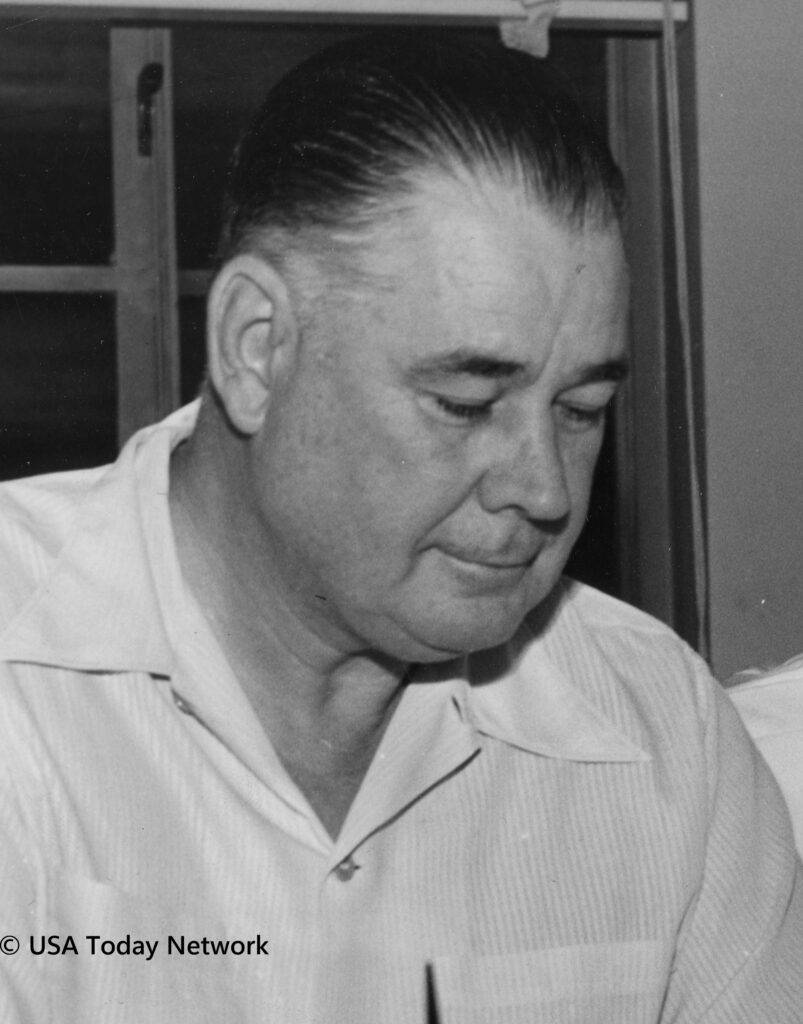The Early Years & College Football Playing Career
Born on February 17, 1892 in Greenville, Texas, Robert Reese Neyland was a highly regarded American college football player and coach. He was also a much-respected soldier, attaining the rank of Brigadier General after serving in the army.
Neyland grew up in Greenville where he attended high school and subsequently joined Burleson Junior College, also in Greenville. After one year he then transferred to Texas A&M University, with a major in engineering.
It’s at A&M that Neyland began to play football at a high level, resulting in him winning a place at the United States Military Academy (USMA) at West Point in 1912. His engineering studies continued here, and his athletic prowess was clearly evident as he played as an end on the Army football team in 1914 and 1915, and was victorious in twenty straight baseball games. What was further impressive was that he was an outstanding boxer, winning the title of heavyweight champion for three years straight.
Robert Neyland’s path to coaching was unlike many others, as he graduated from the USMA and worked on construction projects at the border between the U.S. and Mexico. It wasn’t long after this that he was deployed to France during World War I.
He was re-assigned back to Texas before enrolling at the Massachusetts Institute of Technology (MIT) in 1920 to further his engineering studies.
University of Tennessee Coaching Position & Timeline
In 1921, he found himself back at West Point as the assistant coach for not just the football team, but also basketball and baseball teams. It became evident he had a skill for not just playing sports at a competitive level, but also coaching and getting the best out of players.
Again, unlike other college football coaches, Neyland’s first and last coaching position was at just one institution, the University of Tennessee.
Because of his relationship with the army, Neyland’s coaching stints were varied, along with continuing to serveq time in the military.
He first started coaching at the University of Tennessee in 1926, for a period of 8 years. He was told that his main aim should be to beat Vanderbilt University, as the Volunteers had constantly been beaten by them since 1920.
Being the determined individual that he was, he accomplished this goal and that was just the beginning.
His record as a coach during the period of 1926-1934 was exemplary, standing at 75-7-5.
The Southeastern Conference (SEC) was formed in 1933, and Tennessee were 7-3 and 5-2 in the league, and the following year went 5-1 in the conference and 8-2 overall. Out of the 68 games they played at home, only one ended in defeat.
In 1935 the Army sent him to Panama, and his team felt his absence, with every major game being lost in the season that he was away. A year later he decided to retire from the Army and go back to the University of Tennessee and served again as head coach, leading the Volunteers to victory with 31 wins between 1938 and 1940.
He was called up yet again by the Army during World War II, and after this he frequently moved around on reassignments from China to India. During this period of his military service he worked his way up the ranks, reaching the rank of Brigadier General.
With a strong yearning to continue coaching, he picked up again at the University of Tennessee in 1946, coaching his team to multiple victories between 1946 and 1952. During this final stint as head coach, the Volunteers had an incredible run, with his team being crowned Southeaster Conference Championship winners, reaching the Cotton Bowl and the Volunteers becoming the National College champions in 1951.
His total coaching record consisted of 216 games at the University of Tennessee with a tremendous record of 173-31-12. In fact, under his leadership and guidance, the Volunteers were able to deliver 112 shut outs against their opponents. The Volunteers were also able to set several NCAA records, consisting of 17 back to back season shut outs in a row as well 71 straight scoreless quarters in the period between 1938-1940.
Life after the University of Tennessee
In 1954, due to deteriorating health, Neyland stepped down from his coaching position and remained on board as the athletic director until he passed away in New Orleans on March 28, 1962, aged 70.
He was also keen to improve and majorly expand the home stadium, to the point of drawing plans and designing the layout. As a tribute to their legendary coach, the University of Tennessee renamed the stadium to Neyland Stadium after he passed away.
Prior to his death, he had a vision to create a scholarship program at the University of Tennessee for those with high academic abilities, and the President of the University of Tennessee, Dr. Andrew Holt saw this through, with the incorporation of the Robert. R. Neyland Scholarship Fund in 1962.
Sports Illustrated Magazine chose Neyland as the best defensive coordinator in their ultimate college football team, as part of the “Best of the 20th Century” edition.
He is regarded as being one of the most prolific college football coaches in history, as well as being a pioneer with the use of press box spotters and telephones to help him with his coaching choices. In a time where many successful coaches soaked up the adulation, Neyland was the opposite; choosing to avoid the media and lecturing opportunities with the view of letting his record as a famed coach do the talking.
In 1956 he was inducted into the Football Hall of Fame, received the Football Writers’ Man of the Year Award in 1954 and the A.A. Stag Award by the American Football Coaches Association in 1957.
Aside from his many coaching accolades, he also received many for his military service including the Legion of Merit, the British Knight Commander and the Distinguished Service Medal from the United States.
Notable Awards
SEC Coach of the Year 1936
SEC Coach of the Year 1938
SEC Coach of the Year 1950
SEC Coach of the Year 1951
College Football Hall of Fame 1956

